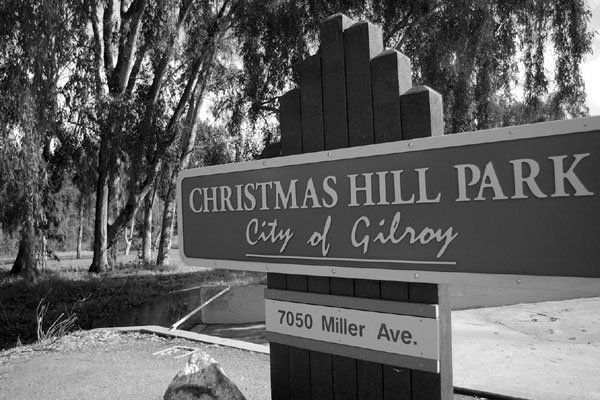Historical names keep South Valley’s past alive
El Toro. Christmas Hill Park. Fremont Peak. Behind the names of these and other familiar South Valley landmarks lie fascinating tales of and insight into this place we call home.
Often, the history behind the names on a map seem obvious. Monterey Road, for example, was given its designation in the early 1800s because it served as the road from San Jose to Monterey. But other name origins are more cryptic. How, for instance, did Gilroy’s I.O.O.F. Street get its rather unusual name?
“People aren’t plucking these names out of the air,” said Lucy Solorzano, curator of the Gilroy History Museum. “There’s a sense of history here. It kind of helps you remember the people of the past, otherwise, you’re going to forget these people whom the streets were named after.”
Go West Young Men
Many of South Valley’s roads and streets are named after the pioneers who established their homes here more than a century ago. What are now asphalt-paved avenues through housing divisions were first dirt roads. And those roads originally were named after the ranchers whose land these country lanes passed through.
The community of Morgan Hill has several avenues named after early pioneers and farmers. Tennant Avenue was named after rancher William Tennant who moved to California during the Gold Rush and settled in the South Valley in 1852. Dunne Avenue was named in honor of Catherine O’Toole Murphy Dunne, who in the late 19th century owned land blanketing what’s now Morgan Hill, San Martin and Gilroy.
Like Gilroy’s Henry Miller, Dunne was a civic-minded person who believed in improving her community. She generously donated 17 acres of Gilroy land for the St. Mary Church and parish. In the mid 1890s, her son Peter took over the management of the family property. He hired the San Jose real estate firm of Burbon and Devendorf to sell subdivided lots of land. The lots helped create the town of Morgan Hill.
South Valley cities also hold many streets honoring the community’s founding fathers. Hawkins Street in Hollister was named after Thomas S. Hawkins, a prominent political figure in the town’s early days. Hazel Hawkins Hospital was named after his granddaughter, who died of a burst appendix when she was 9 years old. Thomas Hawkins believed she would have lived if Hollister had had a hospital.
Gilroy seems especially keen on honoring its early mayors. Streets commemorate mayors James Princevalle, George Wentz, A.A. Martin, Walter Fitzgerald, Dr. Herberland Chesbro, Littleton Whitehurst, William Furlong, and William Hanna.
Gilroy’s Culp Drive was named after James Culp, the owner of a Gilroy-based tobacco company that, at the turn of the last century, was the world’s largest cigar manufacturer. And the town’s Fowler Street commemorates Gilroy-born Robert Fowler, a pioneer aviator. Among other record-breaking feats, Fowler was the first to fly solo across the United States from west to east. He departed from San Francisco on Sept. 11, 1911.
Miller Avenue was named after the cattle baron Henry Miller, who owned immense spreads of land throughout the West in the 19th century. His holdings equaled the size of Belgium, it’s claimed. Miller was a well-respected citizen of the community who funded civic projects such as Gilroy’s first public hospital.
Reflecting Gilroy’s agricultural history in the 21st century, Hirasaki Avenue was named after Jimmy Hirasaki, a Japan-born farmer who was the first person in this region to grow garlic commercially. He started cultivating garlic in 1921, and soon became the world’s largest grower of the odoriferous herb, thus giving Gilroy its claim to fame.
A Mountain of Many Names
Morgan Hill was named after the pioneer Hiram Morgan Hill and not after the prominent volcano-like mound dominating views west of town. That 1,423-foot-high landmark is called “El Toro” – one of several names it has been graced with over the years. The Spanish originally called it “Oreja de Oso” meaning “Bear’s Ear.” Later, early American inhabitants of South Valley referred to it as Murphy’s Peak in honor of Martin Murphy Sr. – who often rode to the top of mountain to view the cattle on his vast land holdings
Somehow, the name changed to El Toro, Spanish for “the bull,” but no one is sure exactly why. One theory holds that early settlers saw the shape of a giant sleeping bull on the hill’s curvature.
The more commonly held explanation, however, is that author Bret Harte gave the hill its name. One day while doing research for a magazine article about the South Valley, Harte rode horseback with Martin Murphy Sr. up the slope to view the valley from the top. Near the summit, they stopped to observe two bulls fighting.
The animals grew annoyed with the men and suddenly turned and chased them. In terror, Harte and Murphy dashed down the hill. When Harte related the incident in the Overland Monthly magazine, he gave the mountain the name El Toro in memory of his close encounter with the bulls.
Tragedy Behind the Town
The village of San Martin received its name as a result of a tragedy in the Murphy family. On April 11, 1853, Martin Murphy’s son Bernard Murphy, Catherine O’Toole Murphy Dunne’s first husband, boarded the 61-ton side-wheel steamboat Jenny Lind at the South Bay port town of Alviso. He was on his way to business trip to San Francisco. Around 12:30pm, as the ship neared what’s now the San Mateo Bridge, the boilers exploded. Scalded severely by the steam, Bernard was one of 34 passengers who died in the accident.
His grieving father asked Catholic officials at the Santa Clara Mission church for permission to build a cemetery in the South Valley. Murphy wanted to lay his son to rest near the family home.
He built a small chapel, naming it San Martin after his patron saint, St. Martin of Tours. He dedicated the cemetery on All Soul’s Day in 1853 and buried Bernard’s body there. Over time, a small village formed nearby and took its name from the chapel.
A Tale of Two Counties
The two counties that form the South Valley also have interesting histories behind their names. Santa Clara County was named after the Santa Clara Valley, which in turn received its name from the Mission Santa Clara established in 1777. The Spanish priests named the church in honor of Saint Clare of Assisi, Italy. Clare is the patron saint of embroiderers, goldsmiths and television writers.
The story behind San Benito County’s name is a bit more complex. In 1771, Spanish explorer Pedro Fages of the Gaspar Portola expedition took 14 men on a trek east of Monterey to explore what lay beyond the Gabilan Mountain range. On March 21 – St. Benedict’s Day – they entered an oak-dotted grass valley. Here they rested by a coursing river and celebrated Mass. Juan Crespi, the expedition’s priest, named the river Rio San Benedicto in honor of St. Benedict.
When the Americans started settling the region, they shortened the stream’s name to San Benito and named the valley after it. In 1874, settlers named their newly formed county “San Benito” after it broke off from Monterey County.
Old Glory’s Original Perch
High atop the Gabilan Mountains west of San Juan Bautista rises Fremont Peak, a prominent double-pointed crest which can be seen from Monterey, San Benito and Santa Clara counties.
The Spanish settlers originally called this natural landmark Gabilan Peak (Hawk’s Peak) after the magnificent birds that soar here.
In the mid-1840s, tension brewed between the United States and Mexico over who controlled the Southwest territory. Captain John C. Fremont, a U.S. Army officer, and his men were in California on the pretense of making maps of the Mexican-owned West Coast region. But they were actually here to gather intelligence on Mexico’s defense here.
On March 6, 1846, in an act of defiance of Mexico’s sovereignty, Fremont raised the American flag at the crown of the 3,169-foot mountain. It was the first time on record the stars and stripes were ever raised on California soil. The flagpole, however, blew down in the wind. Fremont took it as a bad omen, and he and his band of explorers left the mountain now bearing his name.
Gilroy’s Holy Holly
In summers when it’s hellish hot at the Gilroy Garlic Festival, many festival-goers probably wonder why on earth the site of the world-famous event is called Christmas Hill Park. Two theories are given by the Gilroy History Museum. Some local folks say that at one time during the winter holiday, South Valley residents climbed the hill here and looked down at the town to view the holiday lights decorating the various homes.
The more likely explanation is that its named after the toyon bushes that grow in abundance here. These plants have exceptionally bright red fruit, giving them the name Christmas berry. (They’re also known as California holly.) South Valley residents often came up here to clip off branches of the ripe berries to decorate their homes for the holidays. Over time, the prominent landmark became known as “Christmas Hill.” Later, the city turned it into a public park where the Garlic Festival is now held annually.
Rancher’s Gold Mine
Bolado Park near Tres Pinos in San Benito County is named after Joaquin Bolado, an early settler of the region. Born in Spain, he left that country for Zacatecas, Mexico, to avoid being drafted into the Spanish army.
With many others drawn to California during the Gold Rush, Bolado arrived in San Francisco in 1849. He was unsuccessful in the gold fields, but saw that the real money was in supplying the miners with meat. With hard work over the years, he built his Tres Pinos area ranching business and became a wealthy man. In 1927, his daughter Julia Bolado Ashe Davis donated 28 acres along the San Benito River to be turned into a public park – a serene place where the San Benito County Fair is held annually.
Odd Fellows Orphanage
So how exactly did I.O.O.F. Avenue in Gilroy get its name? It’s thanks to early South Valley philanthropist Catherine Hoxett who donated land and money to build a home for California’s orphans here. The orphanage located east of Gilroy’s downtown was run by the International Order of Odd Fellows (I.O.O.F.), a social fraternity dedicated to worthy causes. The street the orphanage was built on was named in the group’s honor. Today, the building where the orphanage once stood serves as offices for Rebekah Children’s Services.













